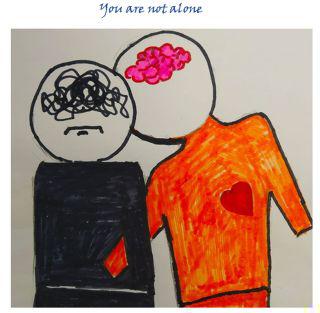Study on Empathy and Sympathy of Adolescents
Study on Empathy and Sympathy of Adolescents

Background and Introduction
The Research Division of the Hong Kong Academy for Gifted Education (HKAGE) and the Department of Educational Psychology of The Chinese University of Hong Kong jointly conducted a study related to empathy and sympathy in 2019. This study aimed at understanding the situation of empathy, sympathy and prosocialness of Hong Kong adolescents using appropriate self-report instruments. Comparisons were made with respect to their gender, giftedness and study interests.
Empathy is the capacity that an individual understands or feels what another person is experiencing from within his/her frame of reference, that is, the capacity to place oneself in another's position. Nowadays, researchers opine that empathy comprises both an affective and a cognitive component. The affective component relates to the experience of another person’s emotional state, while the cognitive component refers to the comprehension of another person’s emotions. On the other hand, Sympathy is the capacity that a person experiences feeling of concern and sorrow about distressful events in another person’s life. Besides, prosocialness is a tendency to enact prosocial behaviours - voluntary and intentional behaviours that benefit others (e.g., sharing, helping, and caring). It is suspected that there is a high level of association among prosocialness, empathy and sympathy. Furthermore, prosocialness has been found to be positively associated with diverse positive developmental outcomes, including academic achievement.
Data Collection Method
A total of 622 Hong Kong secondary students aged around 11-20 participated in this study. Among them, 359 were secondary student members in the HKAGE while the rest of them were secondary students in regular schools. All participating students were invited to complete question items on aspects concerned.
The 12-item Adolescent Measure of Empathy and Sympathy (Vossen et al., 2015) was adapted to measure students’ empathy and sympathy. Twelve items are listed in three subscales, namely (i) cognitive empathy, (ii) affective empathy, and (iii) sympathy, with four items under each subscale. The 16-item Prosocialness Scale (Caprara et al., 2005) was adapted to measure students’ prosocialness. Students indicate their first reaction to statements like ‘I do what I can to help others avoid getting into trouble.’
Results and Discussions
Some students did not provide complete responses. Finally, the responses of 611 secondary students (359 HKAGE gifted student members and 252 non-gifted students) were available for the analysis. According to our results, it is observed that the overall means of percentage scores (with respect to the full mark) respectively for cognitive empathy, sympathy and prosocialness of these secondary students were relatively higher (around 70% of the full mark respectively for the three aspects); while the overall mean of percentage scores of affective empathy was relatively lower (around 60% ).In addition, group variations for cognitive empathy, affective empathy, sympathy and prosocialness with respect to students’ gender, giftedness, and study interests were studied. The results showed that the means of percentage scores of female students for all aspects concerned were higher than that of males. Besides, the means of percentage scores of the gifted students respectively for empathy & sympathy and prosocialness (69% and 71% respectively) were higher than that of the non-gifted students (both being 66%). Moreover, the corresponding means of percentage scores of students whose study interests were only STEM related (both being 63%) were lower than that of the others (69% and 71% respectively). On the other hand, the corresponding means of percentage scores of students whose study interests covered personal growth and social development was relatively higher.

Furthermore, to explore the relationship amongst cognitive empathy, affective empathy, sympathy and prosocialness, as well as their impacts to academic and non-academic performance, Structural Equation Modelling (SEM) was conducted. The analysis results demonstrated that empathy and sympathy had a direct positive impact on prosocialness, which itself could be regarded as a treasurable characteristic. Besides, empathy and sympathy had an indirect positive impact (via the presence of prosocialness) to non-academic performance. Based on a number of research studies, it is learnt that non-academic activities (or leisure activities) did have a positive association with one’s life satisfaction and well-being.
The empirical results of the current study did support that empathy and sympathy are essential for the development and well-being of a student. Besides, it is important that a gifted student, who has a high level of ability, could be empathetic and sympathetic so that the goals of his/ her life will not simply cater to self-interests, but will also consider those in need, and serve others. This could benefit the whole society and in turn, provide positive impacts to the student’s own development and achievement. In some studies (e.g., Borba, 2016), empathy ‘habits’ are identified and found to be teachable. Thus, affective training related to the nurturing of cognitive empathy and affective empathy could be introduced in programmes and services for HKAGE student members in the future so as to let students achieve a holistic development.
References
Borba, M. (2016). Unselfie: why empathetic kids succeed in our all-about-me world. New York: Touchstone.
Caprara, G. V., Steca P., Zelli A., & Capanna C. (2005). A new scale for measuring adults’ prosocialness. European Journal of Psychological Assessment, 21(2), 77-89.
Vossen, H.G.M., Piotrowski, J.T., & Valkenburg, P.M. (2015). Development of the adolescent measure of empathy and sympathy (AMES). Personality and Individual Differences, 4, 66-71.






